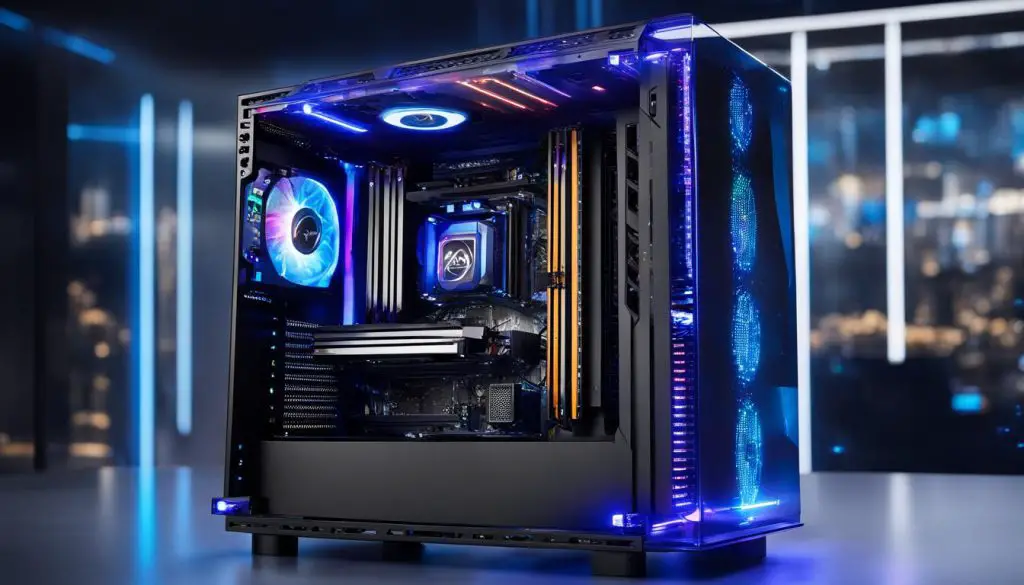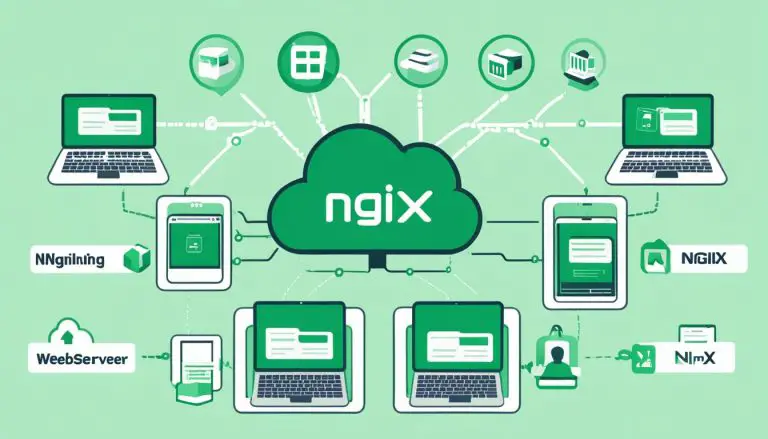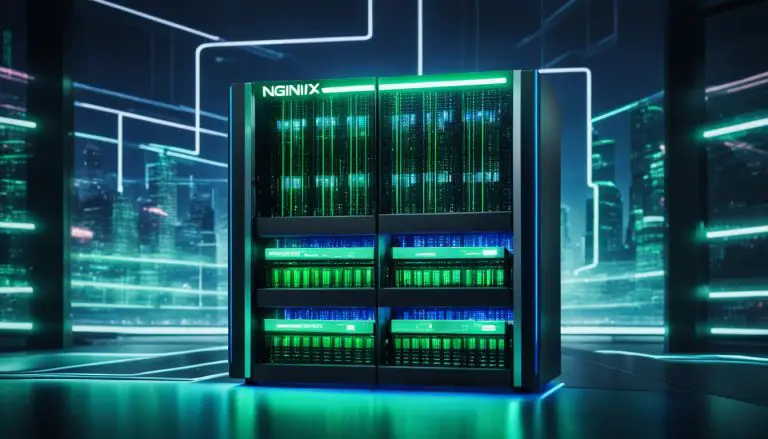Understanding TPM 2.0: What is it and How does it Work?
Trusted Platform Module (TPM) 2.0 is an essential hardware-based security feature that plays a crucial role in safeguarding sensitive information on a computer. It provides cryptographic functions and offers robust protection against tampering and malicious software attacks.
TPM 2.0 is a secure crypto-processor that generates, stores, and limits the use of cryptographic keys. It is designed to be tamper-resistant, ensuring the integrity of a computer system. Whether integrated into the chipset or as a discrete chip soldered to the motherboard, TPMs offer security and privacy benefits for system hardware, platform owners, and users.
Since July 2016, TPM 2.0 has become a mandatory requirement for all new device models. It has become an integral part of the overall security infrastructure, adding an extra layer of protection to PCs.
Key Takeaways:
- TPM 2.0 is a hardware-based security feature that protects sensitive information on a computer.
- It generates, stores, and limits the use of cryptographic keys.
- TPM 2.0 enhances overall system security and prevents unauthorized access to encrypted data.
- It is required for Windows 11 compatibility and has been a standard requirement for Windows 10 since 2016.
- Understanding and embracing TPM 2.0 is crucial in the world of cybersecurity.
The Functions and Significance of TPM 2.0
Trusted Platform Module (TPM) 2.0 offers a range of features that go beyond basic boot-up protection. One of its key functions is handling encrypted messages for applications and PC features. TPM 2.0 also maintains SSL certificates for websites, adding an extra layer of security to online communication. Its significance lies in the enhanced system security it provides, protecting sensitive information and enabling secure communication between hardware and software.
During the boot-up process, TPM 2.0 generates unique cryptographic keys, ensuring that the system has not been tampered with and preventing unauthorized access to encrypted data. These cryptographic keys are crucial for securing the entire system and maintaining data integrity. With TPM 2.0, users can have peace of mind knowing that their information is protected from malicious attacks and unauthorized access.
Furthermore, TPM 2.0 enhances overall system security by safeguarding against unauthorized modifications or alterations. Its tamper-resistant design and cryptographic functions make it a valuable hardware-based security feature. By limiting the use of cryptographic keys and preventing malicious software tampering, TPM 2.0 provides a secure foundation for computing systems.
TPM 2.0 adds an extra layer of protection to a PC by providing unique cryptographic keys during the boot-up process.
By incorporating TPM 2.0 into computer systems, users can benefit from increased security, privacy, and peace of mind. Whether it’s protecting sensitive business data, securing personal information, or ensuring secure online transactions, TPM 2.0 offers a range of benefits. Its significance in today’s cybersecurity landscape cannot be overstated, as it plays a crucial role in safeguarding digital assets and defending against potential threats.
Table: TPM 2.0 Features
| Feature | Description |
|---|---|
| Boot-up protection | Generates unique cryptographic keys during boot-up process to ensure system integrity |
| Encryption support | Enables handling of encrypted messages and SSL certificates for secure communication |
| Safeguard against tampering | Prevents unauthorized modifications and alterations to system security functions |
TPM 2.0 Compatibility and Requirements
When it comes to TPM 2.0, compatibility is an important factor to consider. This hardware-based security feature is required for all new device models since July 2016. However, older devices may still have TPM 1.2, which is not recommended for the latest operating systems like Windows 11. So, how can you check if your computer has TPM 2.0?
You can start by looking for a Security Processor information page in the settings app of your device. Alternatively, consulting your computer manufacturer’s specifications can also provide the necessary information. If your computer does not have TPM 2.0, it may be possible to add a discrete TPM 2.0 chip to your motherboard. However, keep in mind that proper setup in the BIOS is crucial for Windows to recognize and utilize the TPM effectively.
It’s worth noting that TPM 2.0 comes in different types of implementations, including standalone chips, integrated chips, and virtual TPMs that run in software. The compatibility of each implementation may vary, so it’s essential to verify compatibility with your specific operating system and device requirements.
TPM 2.0 vs TPM 1.2: What’s the Difference?
TPM 2.0 brings significant advancements compared to its predecessor, TPM 1.2. It offers improved security features and enhanced functionality, making it the recommended choice for modern systems. One of the key differences lies in the cryptographic capabilities. TPM 2.0 provides more robust encryption algorithms and advanced cryptographic functions, offering stronger protection for sensitive information.
Additionally, TPM 2.0 offers better support for secure boot and secure firmware updates. It enables a secure and trusted platform for booting up the system, ensuring that only authorized software is executed during the boot process. This helps prevent tampering and unauthorized access to the system.
Overall, TPM 2.0 compatibility is essential for modern operating systems like Windows 11. With its enhanced security features and improved cryptographic capabilities, TPM 2.0 provides a crucial layer of protection for your device and sensitive data.
| TPM Version | Key Differences |
|---|---|
| TPM 2.0 |
|
| TPM 1.2 |
|
TPM 2.0 and Windows 11 Compatibility
Windows 11, the latest operating system from Microsoft, comes with a set of new requirements to ensure system security and compatibility. One of the key requirements is the presence of TPM 2.0, a hardware-based security feature that provides cryptographic functions. TPM 2.0 offers enhanced security measures, protecting sensitive information and preventing unauthorized access to encrypted data.
Most newer computers, purchased after 2016, are likely to already have TPM 2.0 installed, making them compatible with Windows 11. However, older devices may only have TPM 1.2 or no TPM at all, which may not meet the requirements for Windows 11. It is important for users to check their computer’s TPM version and ensure compatibility before upgrading to Windows 11.
Users can easily check if their computer has TPM 2.0 by looking for a Security Processor information page in the settings app or consulting their computer manufacturer’s specifications. If a computer does not have TPM 2.0, it may be possible to add a discrete TPM 2.0 chip to the motherboard, but proper setup in the BIOS is required for Windows to recognize it.
| TPM Version | Windows 11 Compatibility |
|---|---|
| TPM 2.0 | Compatible |
| TPM 1.2 | Not recommended |
| No TPM | Not compatible |
The table above summarizes the compatibility of different TPM versions with Windows 11. It is crucial for users to familiarize themselves with TPM technology and ensure their computers meet the necessary requirements for a smooth transition to the latest operating system.
The Future of TPM 2.0 and PC Builds
As the technology landscape continues to evolve, the future of TPM 2.0 and its inclusion in PC builds looks promising. With the increasing demand for enhanced security features and compatibility with the latest operating systems like Windows 11, motherboard manufacturers may start to include TPM chips on future motherboards as a standard feature. This move would ensure out-of-the-box compatibility and simplify the process for users upgrading or building new systems.
The mass production of TPM chips, however, is currently limited, and they are considered specialty items. This limitation may impact the availability and affordability of TPM-equipped motherboards in the short term. Nonetheless, as the benefits and importance of TPM 2.0 become more widely recognized, it is likely that the industry will respond by making TPM chips more accessible and affordable to consumers.

For users planning to build or upgrade their own PCs, familiarizing themselves with TPM technology is essential. Understanding how TPM 2.0 works and its significance in enhancing system security can help users make informed decisions when selecting components for their builds. Additionally, staying up to date with the latest motherboard specifications and compatibility requirements will ensure a smooth and secure computing experience.
Conclusion
In conclusion, TPM 2.0 is a crucial hardware-based security feature that provides cryptographic functions and enhances the overall system security. It is required for compatibility with the latest operating systems like Windows 11 and has been a standard requirement for Windows 10 since 2016. With TPM 2.0, users can benefit from boot-up protection, encryption support, and secure communication between hardware and software.
While some older devices may require additional setup or hardware modification to support TPM 2.0, it is essential to understand and embrace this technology to protect sensitive information and ensure the integrity of your computer system. As technology advances and operating system requirements evolve, TPM 2.0 will become increasingly important in the world of cybersecurity.
As TPM 2.0 becomes a standard requirement for operating systems like Windows 11, we may see more motherboard manufacturers including TPM chips in future PC builds to ensure out-of-the-box compatibility. However, it is worth noting that TPM chips are currently considered specialty items, and their mass production is limited. Nevertheless, as demand grows for enhanced security features and compatibility with the latest operating systems, we can expect TPM chips to become more commonplace in PC builds.
To stay ahead in the ever-evolving landscape of PC builds and operating systems, it is crucial for users to familiarize themselves with TPM technology. By understanding the functions and significance of TPM 2.0, users can protect their sensitive data, enhance system security, and ensure compatibility with the latest operating systems. By embracing TPM 2.0, you are taking an important step towards safeguarding your digital life.
FAQ
What is TPM 2.0?
TPM 2.0 is a hardware-based security feature that provides cryptographic functions and helps protect sensitive information on a computer.
How does TPM 2.0 work?
TPM 2.0 is a secure crypto-processor that generates, stores, and limits the use of cryptographic keys. It adds an extra layer of protection to a PC by providing unique cryptographic keys during the boot-up process, ensuring system integrity.
What are the functions and significance of TPM 2.0?
TPM 2.0 performs various functions such as handling encrypted messages, maintaining SSL certificates for websites, and enhancing overall system security. Its significance lies in protecting sensitive information, enabling secure communication between hardware and software, and preventing unauthorized access to encrypted data.
Is my computer compatible with TPM 2.0?
Most newer computers, bought after 2016, already have TPM 2.0 installed. However, older devices may have TPM 1.2 or no TPM at all, which may not meet the requirements for Windows 11. It is important to check your computer’s TPM version and ensure compatibility before upgrading to Windows 11.
How can I check if my computer has TPM 2.0?
You can look for a Security Processor information page in the settings app or consult your computer manufacturer’s specifications to determine if your computer has TPM 2.0.
What if my computer doesn’t have TPM 2.0?
If your computer doesn’t have TPM 2.0, it may be necessary to add a discrete TPM 2.0 chip to your motherboard. However, proper setup in the BIOS is required for Windows to recognize it.
Is TPM 2.0 required for Windows 11 compatibility?
Yes, TPM 2.0 is required for Windows 11 compatibility. Windows 11 has specific requirements to ensure enhanced security features and protect user data.
Will TPM 2.0 be included in future PC builds?
As TPM 2.0 becomes a standard requirement for operating systems like Windows 11, it is possible that more motherboard manufacturers will include TPM chips on future motherboards to ensure out-of-the-box compatibility. However, the mass production of TPM chips is currently limited, and they are considered specialty items.
What is the future of TPM 2.0?
The demand for enhanced security features and compatibility with the latest operating systems is expected to increase. As a result, the inclusion of TPM chips in PC builds may become more common in the future, and it is crucial for users to familiarize themselves with TPM technology to adapt to the evolving landscape of PC builds and operating systems.
- About the Author
- Latest Posts
Janina is a technical editor at Text-Center.com and loves to write about computer technology and latest trends in information technology. She also works for Biteno.com.






